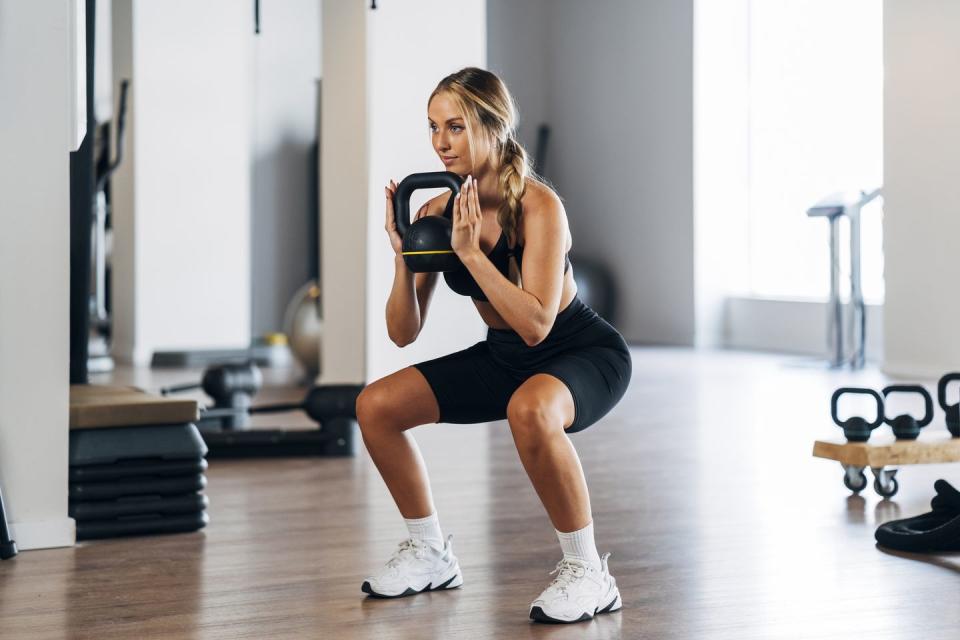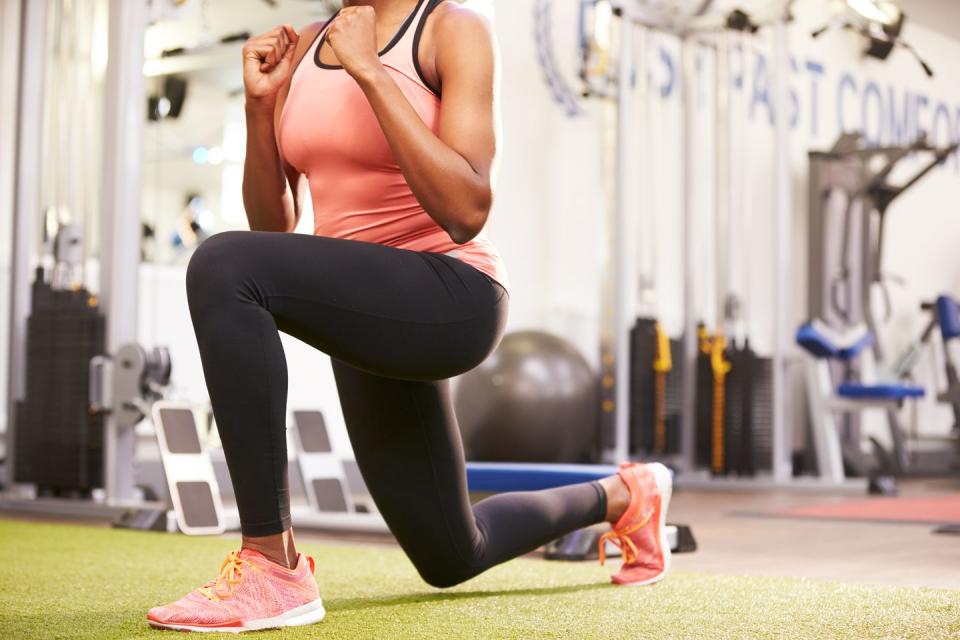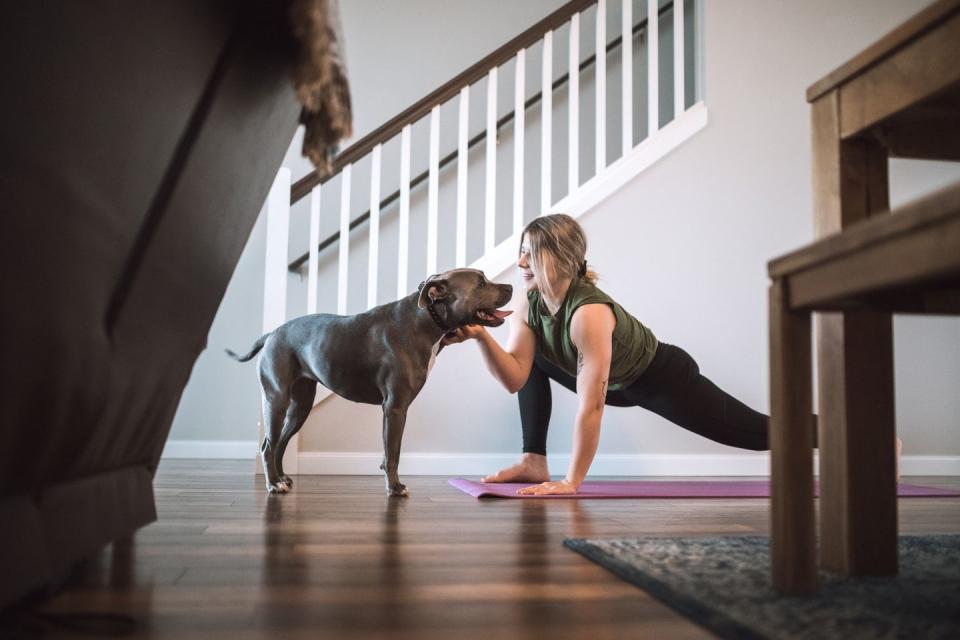'Functional fitness' is creating buzz in the health sphere - but what actually is it?

Functional fitness is probably the most practical type of exercise you can do – though you're likely not alone if you're not quite sure what it is. While we can get caught up in trying to attempt ever-evolving workout trends on TikTok (Madonna squat challenge, 75 hard, or the 12-3-30 treadmill, anyone?), functional fitness is great for going back to basics, but with high reward.
Yes, while lots of exercises are arguably functional in some way, functional training (as it's also known) hits the spot in terms of making the way you move every day the best it can be, and reducing the risk of injury.
So, wondering exactly what it involves and how to get started? We consulted Sarah Campus, women’s PT, nutrition coach, and founder of LDN MUMS FITNESS (who knows her stuff on functional fitness), on everything you need to know before trying it out for yourself.

What is functional fitness?
"Functional fitness is a type of exercise that supports and mimics your everyday life. It includes movements such as walking, pushing, pulling, bending, squatting, twisting, reaching, lunging, and core. These exercises improve functional strength," says Campus.
So essentially, working on your functional fitness over time will make you more agile and ready for the physical demands of your day-to-day. No more sore knees from running up the tube escalators to get to work on time... or doing your back in after attempting a deep clean.
Is functional fitness the same as HIIT or CrossFit?
"HIIT/CrossFit is unimodal, meaning it sticks to one type of aerobic exercise (running, biking, rowing) for several sets. Functional fitness, however, is multimodal meaning it uses multiple functional movements, with no defined rest intervals," explains Campus.
"Plus, HIIT is carried out with maximal effort in certain periods of time, whereas functional training time can vary."
Is functional training strength or cardio?
"Functional training can be seen as both, but it has a greater cardio component to it than strength because the focus is not only on pure muscle power. Functional training encompasses full body movement prioritising compound movements [using more than one muscle group] over focussing on the one muscle at a time in strength training."
So it's a pretty good all-rounder, a bit like swimming!

What are the four pillars of functional fitness?
While different personal trainers may have a slightly different take on this, Campus is confident the key areas are mobility, stability, movement, and strength. Here she runs through what each one means, and how it can help you in your functional journey...
Mobility
"Before you can move fast, move for a long time, or move strongly – you must be able to move! Mobility is essential to access your full, natural range-of-motion, and unlock unhindered function of your body. Remove pain, and prevent future pain and injury."
Stability
"We need to hold everything together so that it lasts. Stability of your hips, back, and shoulders. Stability is essential as it makes life safer, smoother, more efficient. It also allows us to do more in our training, with less risk."
Movement
"We move through life the best way we know how, which is inefficient at best, and harmful to us at its worst. Functional training is all about relearning the natural, mechanically correct skills of moving the body. This makes everyday life easier, leaving you with a surplus of energy, and of course, helps you avoid repetitive or sudden injuries."
Strength
"When you’re strong, everything in life is lighter, and getting things done requires less energy, meaning you have more for the day. Being stronger allows you to work and play more easily, safely, and harder. Being strong is a great long-term investment! Strength will carry you through the years, ensuring you can still do all of the things important to you, even many years from now."
Functional fitness exercises
Focusing more on the actual movements you can do, these can be applied accordingly to both beginners and those more advanced.
PULL – dumbbell row
PUSH – push-ups
SQUAT – chair squats
LUNGE
HINGE – bodyweight hip thrusts
ROTATION – woodchopper
GAIT – seated marching

Functional fitness workouts
Expanding on the above, the below are great to try as workouts, and can be best adapted for either at home or in the gym (or even outside if it works safely).
Home
Squats
Lunges
Push Ups
Suspension Training
Balance Training
Kettle Bell Training
Dumbbell Training
Gym
Push-ups
Walking lunges
Jump squats
Jumping, lunging, or stepping onto an elevated surface
Bodyweight squats
Lateral bounds (running from side to side)
Jumping jacks
Movements done while balancing on one leg

Is functional fitness effective?
Before you tire of the idea alone, here's a reminder of why you're doing it in the first place. "Functional fitness helps to improve balance, coordination, flexibility, muscle strength, and agility. All of these components will leave you more mobile, which in turn helps with your day-to-day life," says Campus.
And who is it best for? "Functional fitness programmes can benefit every person regardless of fitness level, age, exercise experience or time available for training. They can help improve definition, burn calories, enhance aerobic capacity and promote muscle growth."
So, ready to get functional?
You Might Also Like


